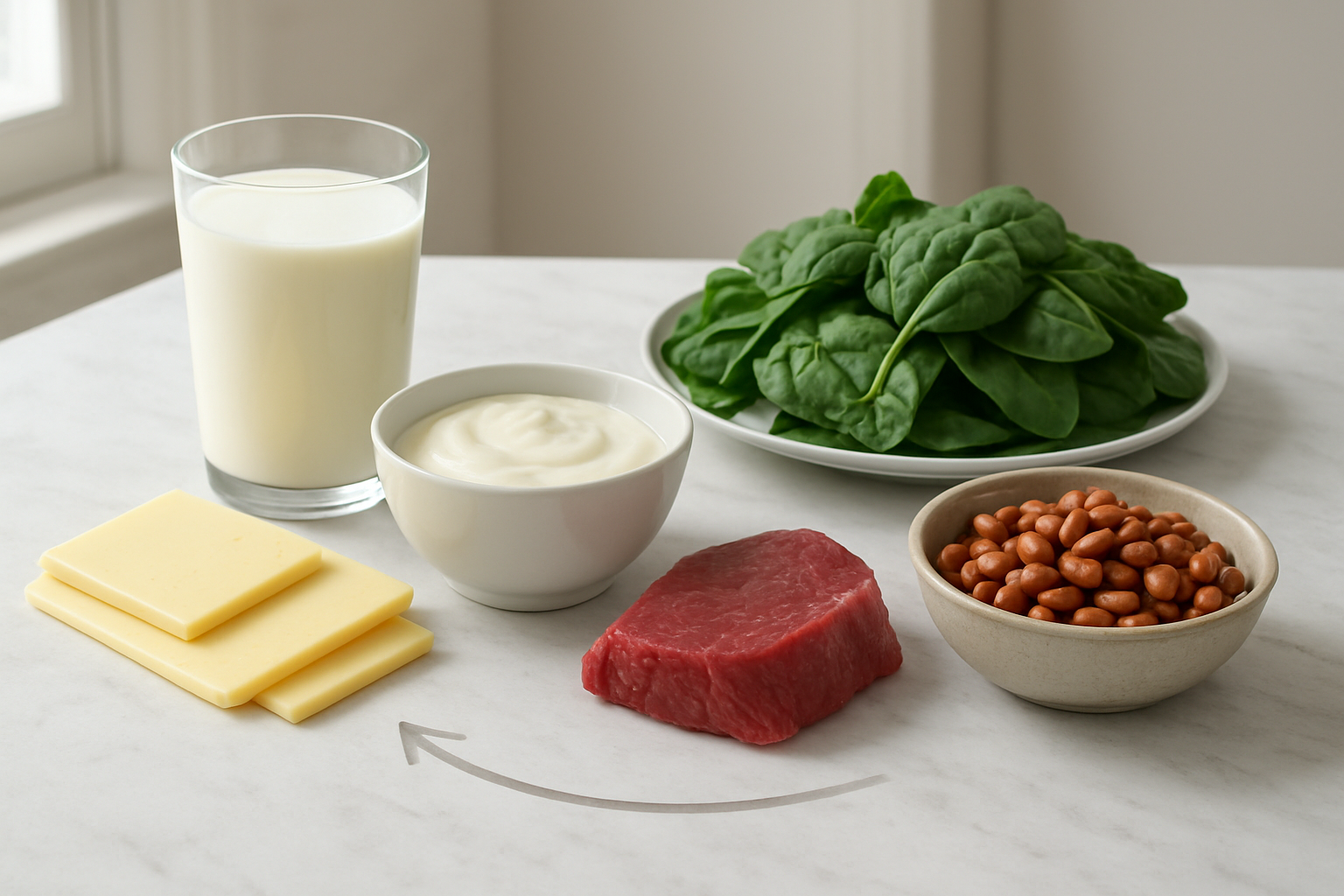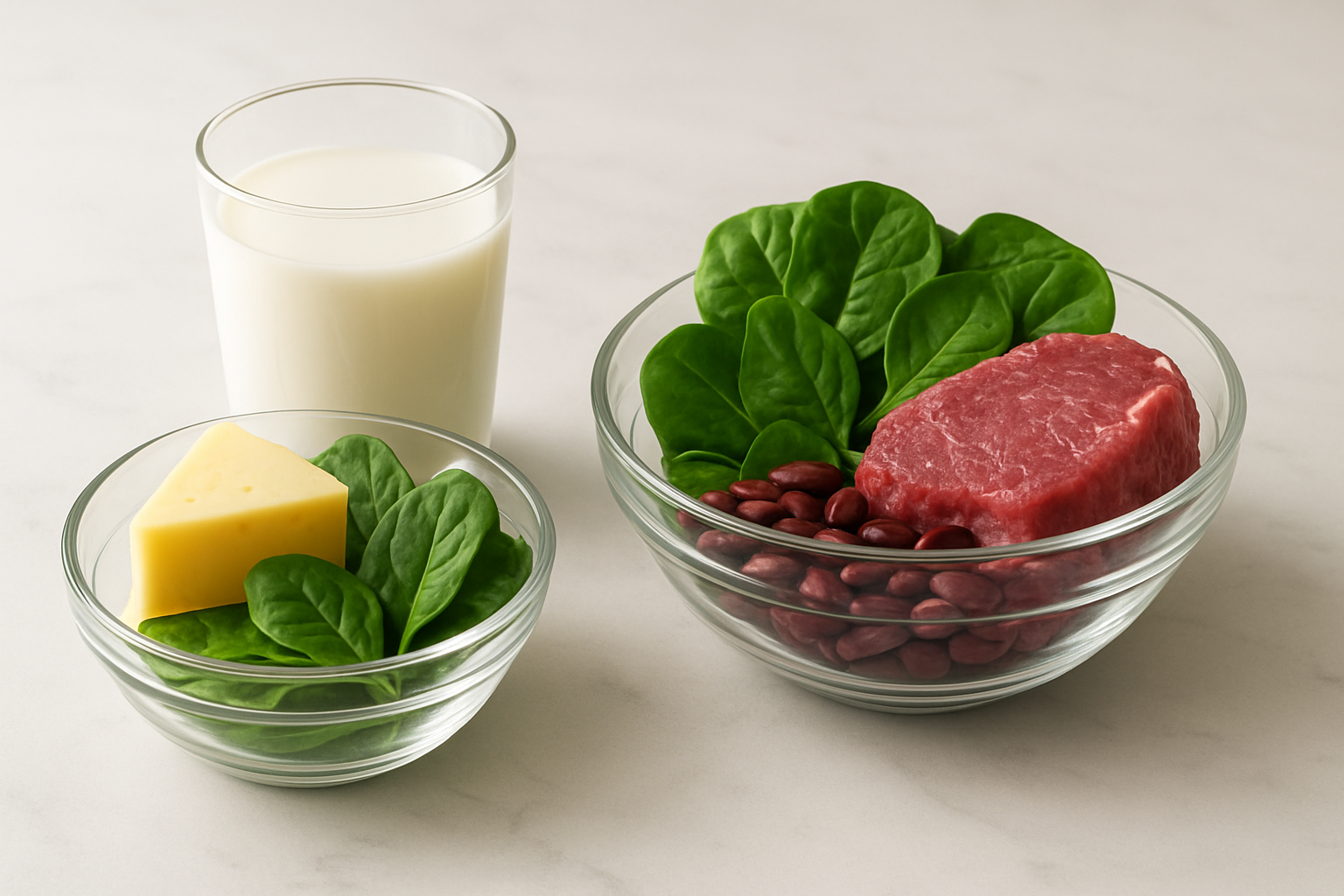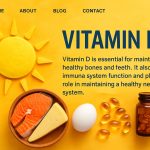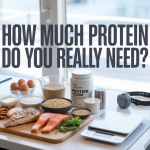Understanding Calcium Interaction with Iron: A Guide for Health-Conscious Individuals
Calcium and iron don’t always play nice together in your body. This nutritional clash affects millions of people who take supplements or eat calcium-rich foods alongside iron sources, potentially leading to iron deficiency or reduced mineral absorption.
This guide is perfect for supplement users, parents managing family nutrition, athletes optimizing performance, and anyone dealing with iron deficiency anemia. You’ll discover how these two essential minerals compete in your digestive system and what you can do about it.
We’ll cover the science behind calcium-iron absorption competition, help you identify problematic food combinations that block iron uptake, and share practical timing strategies to maximize both minerals. You’ll also learn about supplement interactions and get specific advice for pregnant women, vegetarians, and others at higher risk for deficiency.
Understanding How Calcium and Iron Compete for Absorption

The shared absorption pathway in your intestines
Calcium and iron don’t play nice together in your digestive system because they both rely on the same cellular doorway to enter your bloodstream. Both minerals use a transporter protein called DMT1 (divalent metal transporter 1) in your small intestine, creating a bottleneck situation where they literally compete for the same entry points.
When you consume calcium and iron together, calcium often wins this competition. Your body treats calcium as the VIP mineral, especially when it’s present in large amounts. This happens because calcium can block the iron transporter proteins and reduce their efficiency. The competition is most intense in the duodenum – the first part of your small intestine where most iron absorption occurs.
Your intestinal cells also have limited storage capacity for processing these minerals simultaneously. When both arrive at the same time, your digestive system gets overwhelmed and defaults to prioritizing calcium absorption. This biological preference made sense evolutionarily since calcium needs are generally higher than iron needs, but it can create problems for people with iron deficiency.
Why timing matters for optimal nutrient uptake
The battle between calcium and iron isn’t permanent – it’s all about timing. Your digestive system processes these minerals within a specific window, typically 2-4 hours after consumption. This means you can outsmart the competition by spacing out when you take these nutrients.
Taking iron supplements or eating iron-rich foods at least two hours before or after calcium-rich meals can dramatically improve iron absorption. Your body gets a chance to process the iron without calcium interference, allowing the iron transporters to work at full capacity.
Morning versus evening timing also matters. Your body’s iron absorption naturally peaks in the morning when stomach acid production is higher. Calcium absorption, on the other hand, remains fairly consistent throughout the day. Smart timing means having your iron-rich breakfast first, then waiting until lunch or dinner for your calcium-heavy dairy products.
Even short delays can make a difference. Studies show that separating calcium and iron intake by just one hour can improve iron absorption by 20-30%. The longer you wait between consuming these minerals, the better your iron absorption becomes.
Factors that determine which mineral wins the competition
Several key factors tip the scales in favor of one mineral over another. The ratio between calcium and iron in your meal plays a huge role – when calcium intake exceeds 300mg alongside iron, calcium almost always dominates. Smaller amounts of calcium (under 150mg) create less interference.
Your individual iron status affects the competition too. People with iron deficiency actually absorb iron more efficiently, even in the presence of calcium. Your body upregulates iron absorption mechanisms when stores are low, giving iron a fighting chance against calcium interference. Those with adequate iron stores don’t get this protective boost.
The form of iron matters significantly. Heme iron from meat sources faces less competition from calcium compared to non-heme iron from plants and supplements. Heme iron uses different absorption pathways that calcium can’t easily block. Non-heme iron, however, gets hit hardest by calcium interference since both minerals compete for the same transporters.
Stomach acid levels determine absorption success for both minerals. Higher acid levels improve iron absorption and can partially overcome calcium interference. People taking antacids or proton pump inhibitors face double trouble – reduced iron absorption plus stronger calcium competition. Vitamin C can help level the playing field by converting iron to a more absorbable form that competes better against calcium.
Identifying Foods That Create Calcium-Iron Conflicts

Dairy products that block iron absorption
Milk, cheese, and yogurt are some of the biggest culprits when it comes to blocking iron absorption. A single glass of milk contains about 300mg of calcium, which can reduce iron absorption by up to 60% when consumed together. This happens because calcium and iron compete for the same absorption pathways in your small intestine.
Hard cheeses like cheddar and parmesan pack even more calcium per serving than milk. Just one ounce of cheddar cheese delivers roughly 200mg of calcium. Greek yogurt, while nutritious, contains significantly more calcium than regular yogurt – sometimes double the amount.
The timing matters too. Even consuming dairy products within two hours of an iron-rich meal can interfere with absorption. This means your morning cereal with milk could affect how well your body processes iron from your lunch spinach salad hours later.
Calcium-fortified foods to watch out for
Food manufacturers add calcium to many products you might not expect. Orange juice, plant-based milk alternatives like almond and soy milk, and breakfast cereals often contain added calcium carbonate or calcium citrate. These fortified versions can contain as much calcium as dairy products.
Fortified tofu and plant-based meat substitutes frequently include calcium sulfate as a coagulant or texture enhancer. Energy bars and protein powders also commonly feature calcium supplementation. Even some bread varieties and crackers come fortified with calcium.
Check nutrition labels carefully – fortified foods can contain anywhere from 100mg to 500mg of added calcium per serving. Popular fortified orange juice brands typically add 300-350mg of calcium per 8-ounce glass, matching the calcium content of milk.
Natural food combinations that reduce iron availability
Some seemingly healthy food pairings actually work against iron absorption. Spinach salads with feta cheese create a double problem – spinach contains oxalates that bind iron, while the cheese provides calcium that blocks absorption.
Sesame seeds and tahini are calcium powerhouses, containing about 280mg of calcium per quarter cup. When you make hummus with tahini and pair it with iron-rich chickpeas, the calcium interferes with iron uptake. Similarly, mixing nuts like almonds (which contain moderate calcium levels) with iron-fortified cereals reduces the cereal’s iron benefits.
Sardines with bones present an interesting case – while they’re excellent iron sources, their high calcium content from the edible bones can partially inhibit iron absorption from the same meal. Dark leafy greens like kale and collard greens contain both iron and calcium, creating internal competition within the same food.
Hidden calcium sources affecting your iron levels
Calcium lurks in unexpected places throughout your diet. Many medications and supplements use calcium as a binding agent or filler. Antacids like Tums are pure calcium carbonate, containing 200-400mg per tablet. Even multivitamins often include calcium, which can interfere with their iron content.
Processed foods frequently contain calcium additives for various purposes. Canned tomatoes may include calcium chloride as a firming agent. Some salt substitutes use calcium compounds, and certain food preservatives are calcium-based.
Water can be another hidden source, especially if you live in an area with hard water or drink calcium-fortified bottled water. Some municipal water supplies naturally contain high calcium levels that can add 50-200mg to your daily intake without you realizing it.
Restaurant foods pose particular challenges because calcium-containing ingredients aren’t always obvious. Creamy sauces, processed cheese in fast food, and calcium-based food additives in prepared meals can significantly impact iron absorption from restaurant dining.
Maximizing Iron Absorption Despite Calcium Intake

Strategic meal timing to separate calcium and iron
The timing of your meals can make a dramatic difference in how much iron your body actually absorbs. When you consume calcium and iron together, they compete for the same absorption pathways in your small intestine, with calcium often winning the battle.
The sweet spot for separating these nutrients is at least two hours. If you’re having a calcium-rich breakfast with milk and yogurt, wait until lunch to focus on iron-rich foods like spinach, lean meat, or fortified cereals. This gives your digestive system time to process the calcium without creating a traffic jam at the absorption sites.
For people who take iron supplements, morning timing works best when your stomach is empty. Take your iron supplement first thing in the morning, then wait at least an hour before having that calcium-fortified orange juice or coffee with milk. Evening iron supplementation can work too, but make sure your last calcium-containing meal or snack was at least three hours earlier.
If you can’t avoid mixing calcium and iron in the same meal, try to keep the calcium content under 40mg. This small amount won’t significantly block iron absorption, but anything above 50mg starts to create noticeable interference.
Vitamin C foods that overcome calcium interference
Vitamin C acts like a powerful ally for iron absorption, even when calcium is present. This vitamin transforms iron into a form that’s much easier for your body to absorb and can actually override some of the blocking effects of calcium.
The magic happens because vitamin C converts iron from its harder-to-absorb form (ferric iron) into the more bioavailable form (ferrous iron). Even better, vitamin C forms a special complex with iron that helps it bypass the calcium competition altogether.
Here are the vitamin C champions that pack the biggest punch:
- Bell peppers (especially red ones) – contain three times more vitamin C than oranges
- Strawberries – perfect for adding to iron-rich spinach salads
- Broccoli – delivers both vitamin C and some iron in one package
- Tomatoes – great for cooking with cast iron pans to boost iron content
- Citrus fruits – lemons, limes, oranges, and grapefruits
- Kiwi fruit – surprisingly high in vitamin C
- Brussels sprouts – roasted with a squeeze of lemon juice
The amount matters too. You need at least 25mg of vitamin C to see a real difference in iron absorption, but 75mg or more can increase absorption by up to 300%. A medium orange gives you about 70mg, while a cup of strawberries delivers around 85mg.
Optimal spacing between supplements and meals
Getting the timing right with supplements requires more precision than whole foods. Iron supplements are particularly sensitive to interference, and calcium supplements can block absorption for several hours after you take them.
Take iron supplements on an empty stomach, ideally 30-60 minutes before eating or two hours after a meal. This prevents food components, especially calcium, from interfering with absorption. If your stomach gets upset, you can take iron with a small amount of vitamin C-rich food like a few strawberries or a small glass of orange juice.
Calcium supplements should be taken with meals to improve absorption, but keep them separate from your iron-rich meals. If you take calcium twice daily, space the doses at least 12 hours apart and schedule them around your lowest-iron meals.
| Supplement Type | Best Timing | Spacing from Iron |
|---|---|---|
| Calcium Carbonate | With meals | 2+ hours apart |
| Calcium Citrate | Anytime | 2+ hours apart |
| Iron Supplements | Empty stomach | Take alone |
| Multivitamins | With breakfast | Check iron/calcium content |
For people taking both calcium and iron supplements, the easiest approach is taking calcium with dinner and iron first thing in the morning. This maximizes the time between them and works with your natural eating patterns.
Managing Supplement Interactions for Better Health

Safe Timing Gaps Between Calcium and Iron Pills
Taking calcium and iron supplements together significantly reduces iron absorption by up to 60%. The key to preventing this interaction lies in strategic timing. Space these supplements at least 2-3 hours apart for optimal absorption of both minerals.
Morning and Evening Schedule:
- Take iron supplements in the morning on an empty stomach
- Schedule calcium supplements for evening or bedtime
- Allow 3-4 hours between doses when possible
With Meals Approach:
- Iron with vitamin C-rich breakfast (no dairy)
- Calcium with dinner or as a bedtime snack
- Avoid taking both with the same meal
Some people find success taking iron every other day rather than daily, which can actually improve absorption while reducing side effects. This approach allows more flexibility in calcium timing without compromising iron stores.
Choosing the Right Forms of Each Mineral
Different supplement forms interact differently and affect absorption rates. Understanding these variations helps minimize conflicts while maximizing benefits.
Iron Forms and Absorption:
| Iron Type | Absorption Rate | Best Timing | Notes |
|---|---|---|---|
| Ferrous sulfate | High (20-25%) | Empty stomach | Most common, can cause nausea |
| Ferrous gluconate | Moderate (12-15%) | With light meal | Gentler on stomach |
| Iron bisglycinate | High (25-30%) | Any time | Chelated form, minimal interactions |
| Heme iron | Highest (15-35%) | With meals | From animal sources, less affected by calcium |
Calcium Options:
- Calcium carbonate: Requires stomach acid, take with meals, higher elemental calcium content
- Calcium citrate: Better absorbed on empty stomach, works well for people with low stomach acid
- Calcium malate: Good absorption, less likely to cause constipation
Chelated minerals like iron bisglycinate and calcium glycinate show reduced interaction potential because they’re already bound to amino acids, making them less likely to compete for absorption pathways.
Monitoring Your Body’s Response to Supplementation
Your body provides clear signals about supplement effectiveness and potential problems. Learning to recognize these signs helps you adjust timing and dosages appropriately.
Signs of Effective Iron Supplementation:
- Increased energy levels within 2-4 weeks
- Less fatigue during daily activities
- Improved exercise tolerance
- Better mood and concentration
Warning Signs of Poor Iron Absorption:
- Persistent fatigue despite supplementation
- No improvement in energy after 6-8 weeks
- Frequent stomach upset or nausea
- Constipation or digestive issues
Calcium Supplementation Indicators:
- No unusual muscle cramps or spasms
- Stable sleep patterns
- Normal heart rhythm
- No kidney stone formation
Keep a supplement journal tracking when you take each supplement, any food consumed nearby, and how you feel throughout the day. Note patterns like increased energy, digestive comfort, or any adverse reactions. This information becomes valuable when discussing your regimen with healthcare providers.
Blood tests provide objective measurements of your mineral status. Iron studies (ferritin, serum iron, transferrin saturation) show iron absorption effectiveness, while vitamin D levels can indicate calcium utilization since these nutrients work together.
When to Consult Healthcare Providers About Interactions
Certain situations require professional guidance to prevent complications and ensure safe supplementation practices.
Immediate Consultation Needed:
- Taking prescription medications that affect mineral absorption
- History of kidney stones or kidney disease
- Diagnosed with hemochromatosis or iron overload
- Experiencing persistent digestive issues with supplements
- Planning surgery within 2 weeks (iron affects clotting)
Regular Monitoring Situations:
- Pregnancy or breastfeeding
- Chronic conditions like Crohn’s disease or celiac disease
- Taking multiple supplements or medications
- Age over 65 or under 18
- Vegetarian or vegan diet with supplement dependence
Healthcare providers can order specific tests to determine if your current supplement timing and dosages are working effectively. They might recommend alternating supplementation schedules or suggest specific formulations based on your individual absorption patterns and health conditions.
Some medications create additional complications when combined with calcium and iron supplements. Thyroid medications, certain antibiotics, and blood pressure medications can all be affected by mineral supplement timing. Your healthcare provider can create a comprehensive schedule that accounts for all your medications and supplements.
Professional guidance becomes especially important if you’re experiencing symptoms that could indicate mineral deficiency despite supplementation, or if you’re dealing with conditions that affect nutrient absorption like inflammatory bowel disease or gastric bypass surgery.
Special Considerations for High-Risk Groups

Pregnant Women Balancing Dual Mineral Needs
Pregnancy creates a perfect storm of mineral requirements that can feel overwhelming. Your body needs about 27 milligrams of iron daily during pregnancy – nearly three times the normal requirement – while calcium needs jump to 1,000 milligrams daily. The challenge? These two minerals compete for the same absorption pathways in your digestive system.
Smart timing becomes your secret weapon. Take iron supplements between meals when your stomach acid is at its peak, and save calcium-rich foods or supplements for different times of day. Many pregnant women find success taking iron first thing in the morning with vitamin C-rich orange juice, then enjoying their calcium-rich yogurt or milk as an afternoon snack.
Consider splitting your prenatal vitamin if it contains both minerals. Some women take iron in the morning and calcium at bedtime, which also helps with sleep since calcium has mild sedative properties. Always pair iron with enhancers like vitamin C, folate, or vitamin A – nutrients your prenatal vitamin likely already contains.
Watch for signs of deficiency in both minerals. Iron deficiency shows up as fatigue, pale skin, and brittle nails, while calcium deficiency can cause muscle cramps and mood changes. Regular blood tests help track your levels, but don’t wait for symptoms to appear.
Athletes Requiring Both Minerals for Performance
Athletic performance demands both minerals working at peak efficiency. Iron carries oxygen to working muscles, while calcium triggers muscle contractions and supports bone health under the stress of training. Female athletes face particular challenges, losing iron through menstruation and potentially developing low bone density from intense training.
Pre-workout nutrition timing can make or break your mineral absorption. Avoid calcium-rich sports drinks or protein shakes within two hours of taking iron supplements. Many athletes discover that taking iron supplements post-workout with a vitamin C source works best, since exercise temporarily increases iron absorption.
Endurance athletes often benefit from periodic iron loading phases, taking supplements on an empty stomach for maximum absorption, then cycling to maintenance doses with meals. During heavy training blocks, separate your calcium and iron intake by at least four hours when possible.
| Timing Strategy | Iron | Calcium |
|---|---|---|
| Pre-workout | Avoid supplements | Light intake OK |
| During workout | Avoid fortified drinks | Sports drinks fine |
| Post-workout | Ideal with vitamin C | Wait 2-3 hours |
| Recovery meals | Pair with meat/fish | Include dairy/greens |
Track your energy levels, recovery time, and training capacity as indicators of adequate iron status. Bone stress injuries or frequent muscle cramps might signal calcium deficiency despite adequate intake due to poor absorption timing.
Vegetarians Maximizing Plant-Based Iron Absorption
Plant-based iron (non-heme) requires extra strategy since it’s naturally harder to absorb than iron from meat sources. Vegetarians need about 1.8 times more iron than meat-eaters, making every absorption opportunity count. The calcium challenge becomes more complex when plant foods contain both minerals.
Transform your meals into iron absorption powerhouses. Combine vitamin C sources like bell peppers, tomatoes, or citrus with iron-rich foods like spinach, lentils, and fortified cereals. Cook in cast iron pans when possible – it genuinely increases the iron content of your food, especially with acidic ingredients like tomatoes.
Separate your iron-rich meals from calcium-heavy ones by 2-3 hours. Have your spinach salad with strawberries for lunch, then save your calcium-fortified plant milk for an evening snack. Many vegetarians find success eating iron-rich breakfast cereals with orange juice, then having their calcium sources later in the day.
Some plant foods create unique challenges. Spinach contains both iron and calcium, plus oxalates that can interfere with absorption of both minerals. Steam spinach rather than eating it raw to reduce oxalate content, and pair it with vitamin C sources to maximize iron uptake.
Consider food combining strategies that work with your lifestyle. Beans and grains provide iron, while nuts and seeds offer calcium – just don’t eat them together if you’re concerned about iron absorption. Timing becomes especially important if you’re taking both iron and calcium supplements as a vegetarian.

Your body treats calcium and iron like two people trying to get through the same door at once – they compete for the same absorption pathways, which means taking them together can leave you short on iron. This competition happens most when you’re eating calcium-rich foods like dairy products alongside iron sources such as meat or leafy greens, or when you’re taking both supplements at the same time.
The good news is that you don’t have to choose between strong bones and healthy blood. Simple timing strategies can make all the difference – space out your calcium and iron intake by a few hours, pair iron-rich foods with vitamin C sources like citrus fruits, and be extra mindful if you’re pregnant, vegetarian, or dealing with anemia. Your body will thank you for giving both minerals the attention they deserve, and you’ll get the most out of every nutrient you consume.














